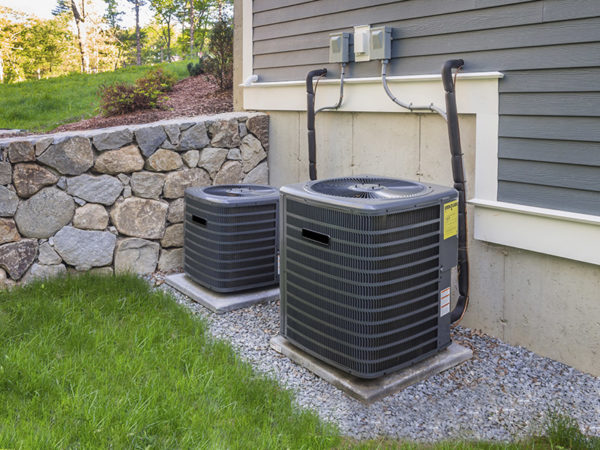When your home in Orlando, FL needs a new heating system and a new cooling system, there’s no need to buy two separate pieces of equipment. A heat pump offers both of these functions, and it can automatically switch between heating and cooling without you having to do anything. Today’s heat pumps offer optimal energy efficiency and convenient features to ensure year-round comfort.
Understand the Basics of a Pump
A heat pump uses electricity and a chemical refrigerant or coolant to move heat into or out of your house. To provide heat, the pump extracts heat energy from the outdoor air. It can do this at temperatures as low as 30 degrees Fahrenheit. To cool your home, the refrigerated chemical absorbs heat from your home’s air and moves it to the outdoors.
Components of the Pump
There are two main parts of these HVAC systems. The indoor unit, is the air handler and it connects to your home’s ductwork. The outdoor unit is the condensing unit. It is mounted onto a concrete slab, and padded footers keep it in place and prevent vibrations and wobbling. A series of coils or tubes connect the indoor and outdoor unit. A refrigerant, also called a chemical coolant, passes between the indoor unit and the outdoor unit. The thermostat, located inside your home, controls the functions of both units. A reversing valve allows the pump to switch from the cooling function to the heating function.
Know How the Heating Function Works
During the wintertime, the pump extracts heat from the air outside. The pump compresses the refrigerated chemical and pushes it through coils to the indoor unit of the system. Room-temperature air passes over the coils, which contain the warm coolant. The air becomes hot, and the blower with a single-speed or variable speed motor pushes it through the air filter and into your home’s ductwork. Once the thermostat detects that the air temperature in your home has reached the set point, it ends the heating cycle.
Discover the Defrost Cycle
Many people with this type of home comfort system feel shocked when cold air suddenly blows out of their home’s vents on a cold day in the winter. This is normal. The unit runs a defrost cycle to prevent the outdoor components from getting too much ice buildup and freezing. A defrost cycle may last for up to 20 minutes.
Learn About the Cooling Function
In the summertime, the heat pump works like an air conditioner. The chemical coolant absorbs heat energy from air blown over the indoor coils. The coolant cycles through the copper tubing back to the outdoor unit. The outdoor unit’s condensing fan helps dissipate the heat. The coolant returns to a colder state, and it is ready to start a new cooling cycle.
Notice the Humidity Drop
In the summertime, the pump not only cools your home’s air, it also removes humidity. Warm air holds more moisture than cooler air. As the air from your home passes over the cold coils of copper tubing, water condenses out of the air. The heat pump’s drain pan collects this water and funnels it into the condensate line. The condensate line typically empties outside of your home on the ground. During the summer you’ll see a white pvc pipe dripping water. This is the condensate line. Cleaning the condensate line is critical to optimal functioning of the pump during the summertime.
What to Look for in a Pump
When choosing a new pump to heat and cool your Orlando home, look for one with a variable speed motor, suggests the Department of Energy. These motors use less electricity and maintain consistent indoor temperatures. Consider a pump that’s compatible with a smart thermostat. These thermostats connect to your home’s Wi-Fi and give you reports about energy use. Program the thermostat with temperature schedules for different times of the day and days of the week. Look for a heat pump with high heating season performance factor (HSPF) and seasonal energy efficiency ratio (SEER) values. These values are measures of the system’s efficiency.
For more information about how these pumps work, take a look at E. C. Waters Air Conditioning & Heat’s heating and cooling services, or reach out to us today.





